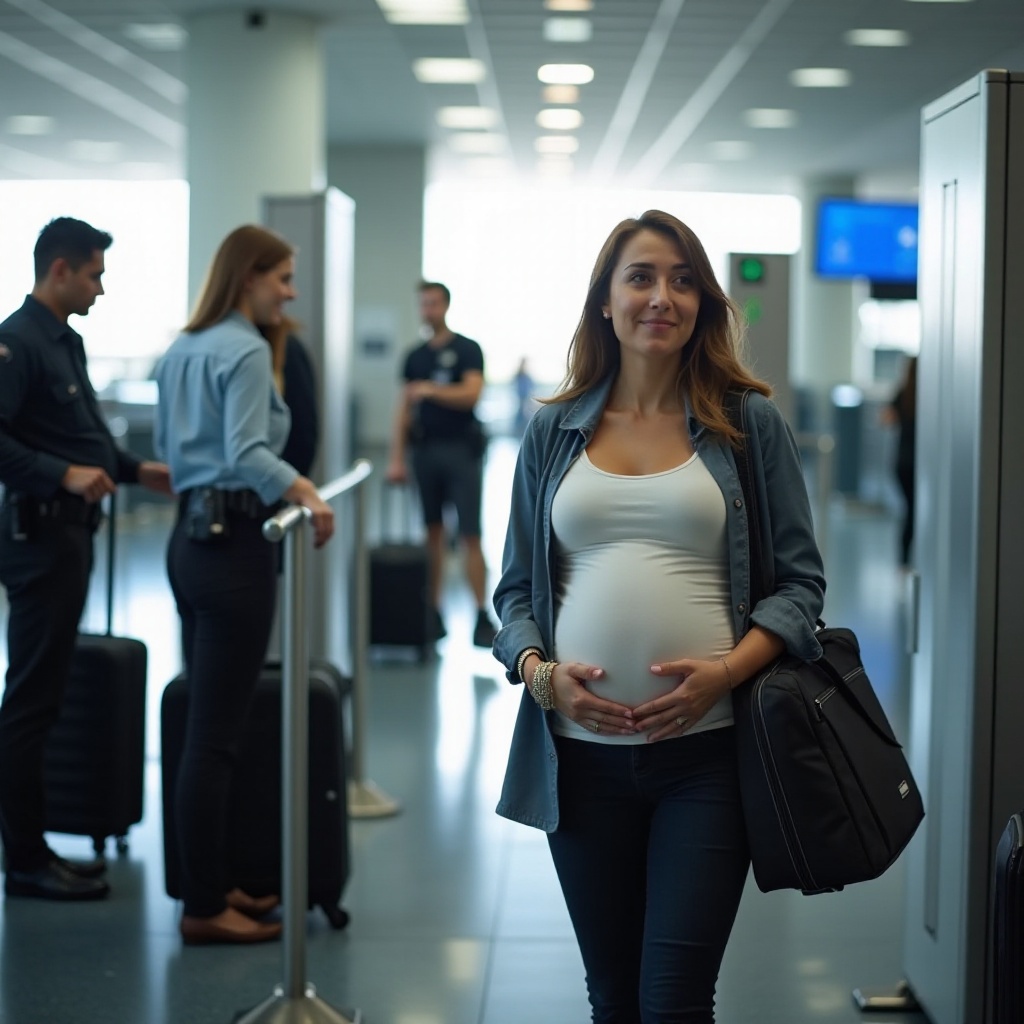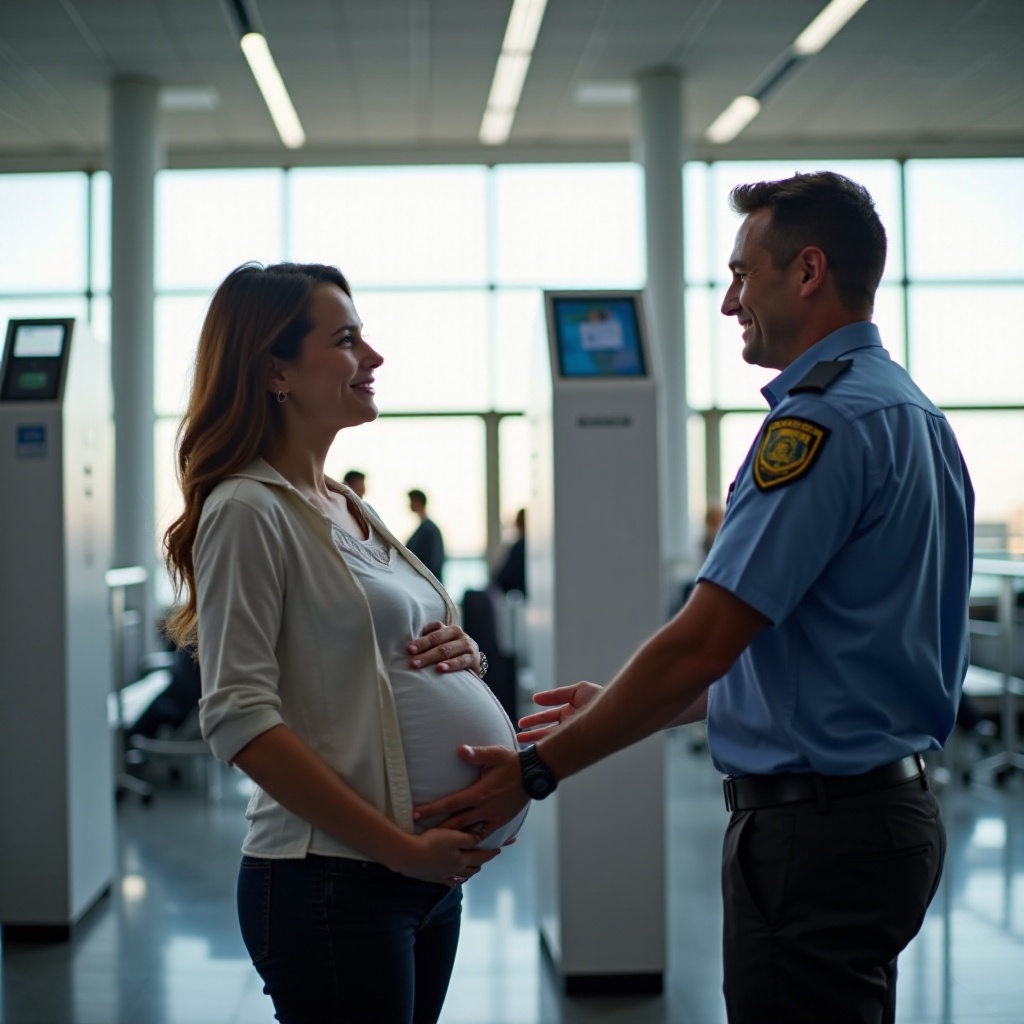Introduction
Navigating airport security can be daunting, especially for pregnant travelers. Concerns about safety, exposure to radiation, and potential stress make the process a significant consideration. This comprehensive guide aims to provide valuable information, ensuring you have a smooth and safe journey through airport scanners. From understanding the types of scanners to expert safety opinions and valuable tips, this guide will support you every step of the way.

Understanding Airport Scanners
Types of Airport Scanners
Airport security employs different types of scanners to ensure passenger safety. The most common types include:
- Metal Detectors: These scanners use electromagnetic fields to detect metal objects.
- Backscatter X-ray Scanners: Utilize low-dose X-rays to produce an image of items hidden under clothing.
- Millimeter Wave Scanners: Use non-ionizing radiofrequency waves to detect objects beneath clothing without physical contact.
How Each Scanner Works
Metal Detectors:
Metal detectors create a magnetic field, and when metal passes through, it disrupts the field, alerting the security personnel.
Backscatter X-ray Scanners:
These scanners emit low-level X-rays which reflect off the body to create a silhouette image highlighting concealed items.
Millimeter Wave Scanners:
Millimeter Wave Scanners emit non-ionizing radiation that bounces off the body. The waves are analyzed to detect any anomalies or hidden objects, ensuring a non-intrusive security check.
Safety of Scanners for Pregnant Women
General Safety Guidelines
When traveling while pregnant, it is crucial to be informed about the exposure levels of airport scanners. Generally, the radiation emitted by these devices is minimal, but being cautious is always a prudent approach.
Expert Opinions and Studies
Various studies have evaluated the safety of airport scanners for pregnant women. According to the American College of Obstetricians and Gynecologists (ACOG), the radiation levels from airport security scanners are significantly lower than the yearly background radiation exposure considered safe in pregnancy.
Additionally, the Health Physics Society states that the radiation dose from a backscatter scanner is equivalent to just two minutes of flying altitude radiation.
Comparison of Scanner Types for Safety
Metal Detectors:
These devices are generally safe since they do not produce ionizing radiation but use magnetic fields to detect metallic objects, posing no known risk to pregnant women.
Backscatter X-ray Scanners:
Although they emit low levels of ionizing radiation, experts deem them safe due to the minimal exposure level, far below the threshold of harmful levels.
Millimeter Wave Scanners:
These scanners use non-ionizing radiofrequency waves that have no known harmful effect on pregnant women, ensuring safety.
Understanding these aspects can reassure you about the safety measures in place and help you navigate security screening with confidence.
Tips for Pregnant Travelers
Communication with Security Personnel
Inform Security Personnel:
Always inform the security staff that you are pregnant. They can guide you through the process and address any concerns.
Requesting Accommodations:
Don’t hesitate to ask for alternative screening methods if you are uncomfortable with a specific scanner type.
Opting for Pat-Downs
Pregnant travelers can request a manual pat-down instead of passing through the scanners. Here’s how:
Make the Request:
Politely ask the security staff for a manual pat-down.
Expect a Thorough Inspection:
Be prepared for a detailed search, which may take longer but eliminates any scanner concerns.
Managing Stress During Security Screening
Plan Ahead:
Arrive at the airport early to avoid rushing through the security process.
Stay Hydrated:
Keep yourself hydrated to maintain your well-being during the screening process.
Practice Relaxation Techniques:
Use deep breathing or other relaxation techniques to remain calm during the screening.
By following these tips, you can ensure a smoother and less stressful airport experience.

Personal Experiences
Testimonials from Pregnant Travelers
Many pregnant travelers have shared their experiences, highlighting both positive and negative aspects of airport security screening.
Positive Experience:
Sarah, in her second trimester, felt reassured after communicating with the security personnel and choosing a manual pat-down, describing the process as smooth and respectful.
Negative Experience:
Emma, in her first trimester, found the lack of clear information at a smaller airport stressful, but the security personnel eventually accommodated her request for a manual search.
These testimonials reflect that experiences can vary, but being informed and proactive can lead to positive outcomes.

Conclusion
Navigating airport scanners while pregnant does not have to be stressful. Understanding the types of scanners, their safety, and communication with security personnel can make the process smoother. By following the tips and taking control of your travel experience, you can focus on the excitement of your journey rather than the security screening.
Frequently Asked Questions
Are airport scanners safe during pregnancy?
Yes, according to experts, the radiation emitted by airport scanners is minimal and significantly below the harmful exposure threshold for pregnant women.
Can I request a different screening method when pregnant?
Yes, pregnant travelers can request a manual pat-down instead of passing through scanner devices. Inform the security personnel about your preference.
How can I reduce stress while going through security screening when pregnant?
To reduce stress, communicate your concerns with the security personnel, plan your arrival ahead of time, stay hydrated, and practice relaxation techniques.
